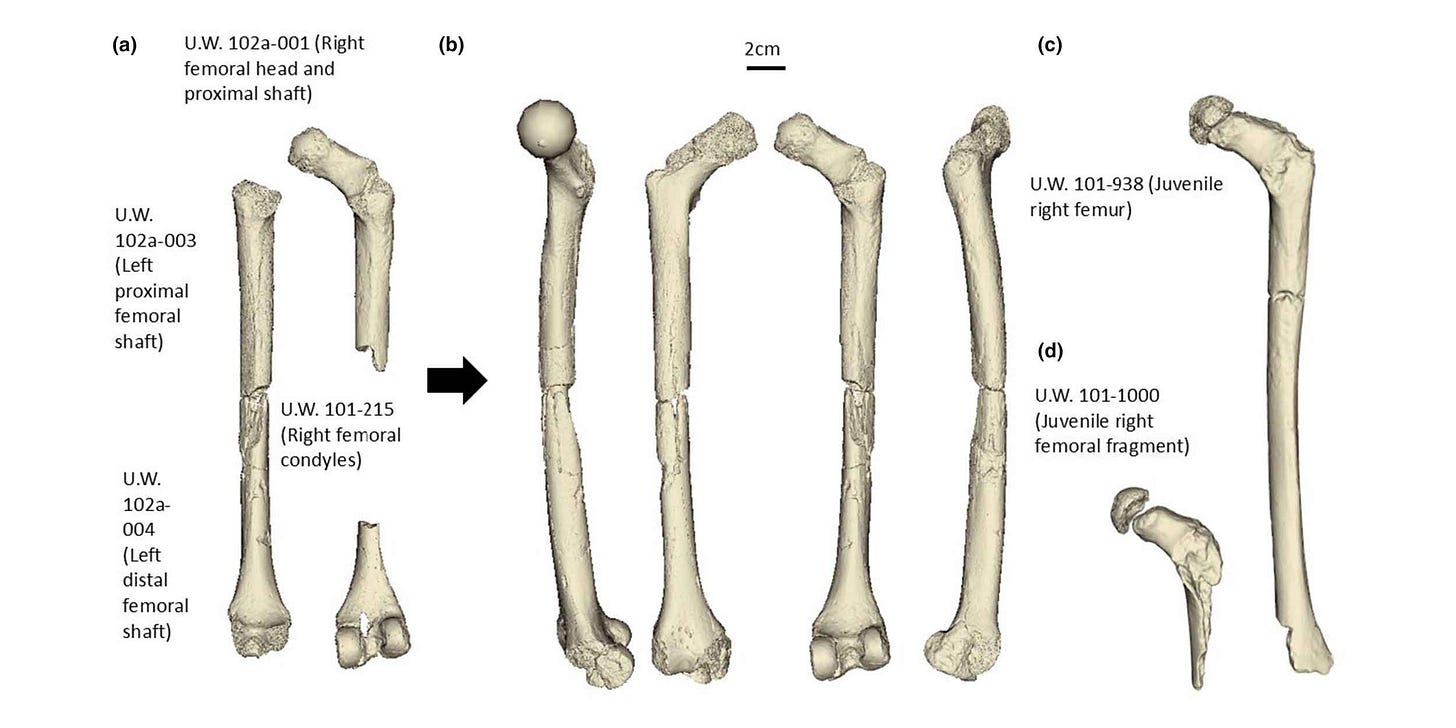Research highlight: Understanding how Homo naledi walked and ran
A new paper in the Journal of Anatomy presents a reconstructed lower limb based on the Rising Star fossil sample.
Citation: Chapman, T. J., Walker, C., Churchill, S. E., Marchi, D., Vereecke, E. E., DeSilva, J. M., Zipfel, B., Hawks, J., Jan, S. V. S., Berger, L. R., & Throckmorton, Z. (2025). Long legs and small joints: The locomotor capabilities of Homo naledi. Journal of Anatomy, (early online).https://doi.org/10.1111/joa.14208
Although all known fossils of Homo naledi come from the Rising Star cave system, it is nevertheless one of the most well-represented species of hominins across the skeleton. Nearly every part of the skeleton is represented multiple times, often in both immature and adult developmental stages.
Homo naledi was as tall as living people from relatively short-statured populations, with statures estimated for adult individuals ranging between 140 and 165 cm. The small joint surfaces and small cortical diameters of long bones of the fossil remains suggest that this species was skinny for its stature. Its legs and feet were shaped very much like recent people, and that means it walked a lot like people do today.

But some details differ, including the smaller body mass and a relatively broader pelvis. Our team wondered whether there might be important differences in walking or running gait in H. naledi compared with living humans or other hominins. Understanding the dynamics of gait in extinct species is not easy. It takes a deep understanding of how the skeleton and musculature go together, applied to dynamic instead of static models.
Our collaborator Tara Chapman with the Royal Belgian Institute of Natural Sciences and the Université Libre de Bruxelles has expertise in biomechanical simulation models of human walking and running. She is working on understanding how the movement styles of H. naledi may have fit within the variation of human movement. The first step in this research was the construction of a 3D model of the H. naledi lower limb. The analysis of this reconstruction is what's reported in the new paper.
Putting together the lower limb led to some insights about the scaling of joint size and limb length. Long leg bones generally increase the efficiency of walking and running, bringing longer distances into reach with the same energy expenditure. But large joint sizes are helpful in spreading force across a larger area, helping to minimize wear and tear and enable explosive movement. Homo naledi has the long legs, but not the large joints.
In the past, some researchers have suggested that Homo-like leg mechanics evolved for long-distance running. At an extreme, some have argued that species like Homo erectus may have been persistence hunters, capable of running prey animals to exhaustion. This kind of endurance running would generate fairly consistent repeated stress on joints, and small joints like those in the H. naledi leg would probably not be very well suited for it.


